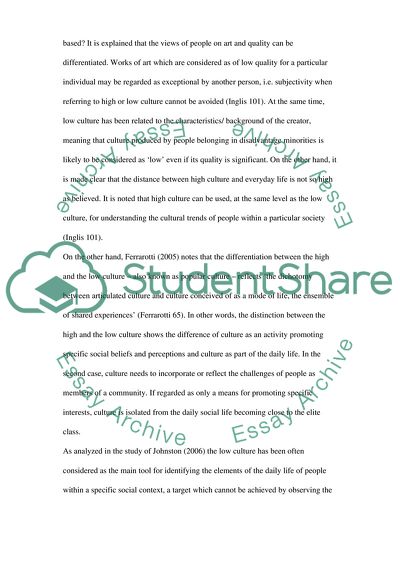Cite this document
(“High and low culture Term Paper Example | Topics and Well Written Essays - 2000 words”, n.d.)
Retrieved from https://studentshare.org/culture/1578376-high-and-low-culture
Retrieved from https://studentshare.org/culture/1578376-high-and-low-culture
(High and Low Culture Term Paper Example | Topics and Well Written Essays - 2000 Words)
https://studentshare.org/culture/1578376-high-and-low-culture.
https://studentshare.org/culture/1578376-high-and-low-culture.
“High and Low Culture Term Paper Example | Topics and Well Written Essays - 2000 Words”, n.d. https://studentshare.org/culture/1578376-high-and-low-culture.


